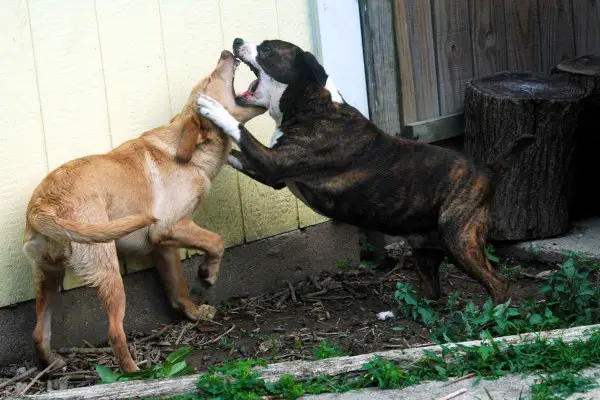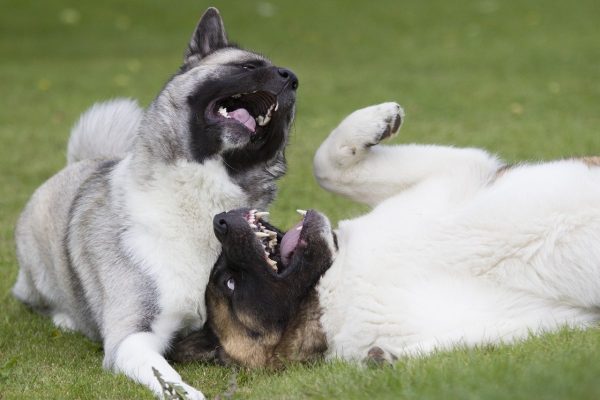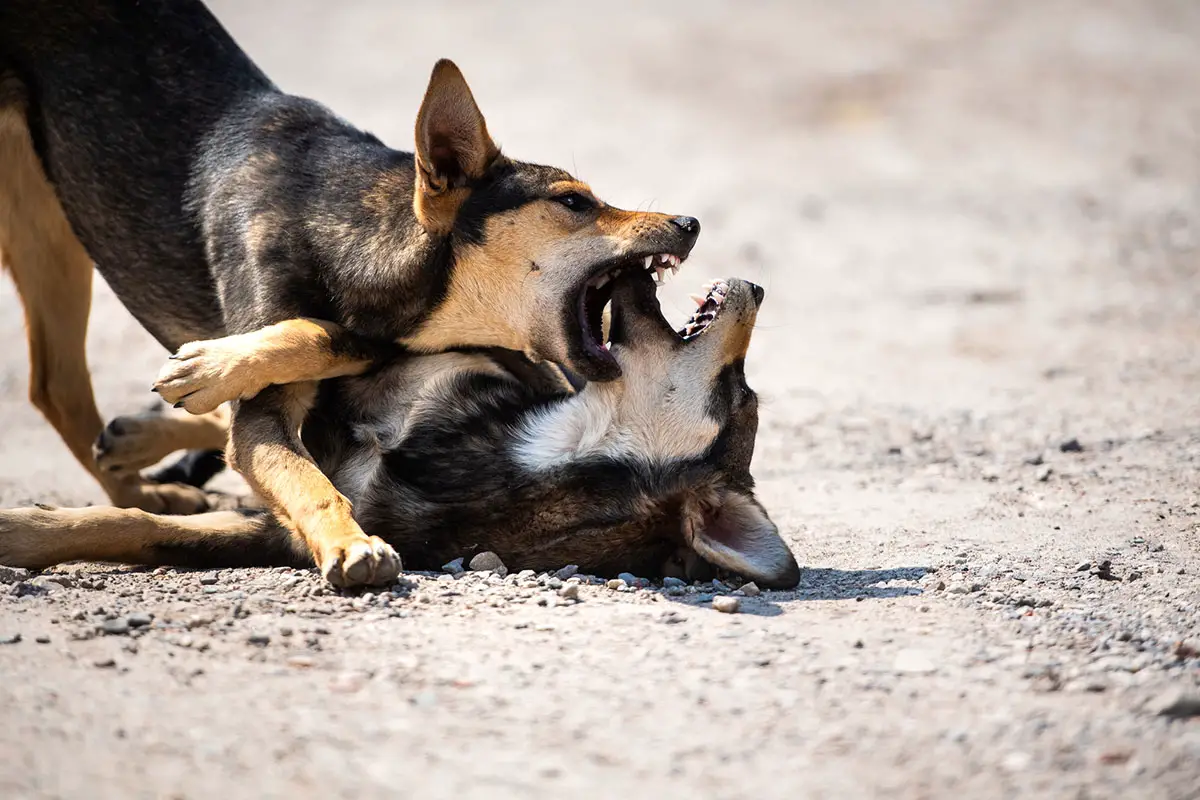As man’s best friend, dogs are usually by our side, and it’s easy to notice some of the behaviors they show, particularly with other dogs, such as placing their heads in the mouths of the other. If you are a new dog owner, you might find it interesting and concerning when you witness this, making you wonder why my dog put her head in my other dog’s mouth.
This article will explain this odd canine behavior and look at some of their body language to give you a glimpse into what’s going on in the minds of your canine buddies.
Why does my dog put her head in my other dog’s mouth?

It’s typical canine behavior for dogs to put their heads in one other’s mouth to confirm their social rank. They only engage in this action with someone they completely trust, and by doing so, they are demonstrating their dominance and submission to each other in a non-aggressive manner.
Key Takeaways:
- When a dog puts its face or head in another dog’s mouth, it’s a way for them to show dominance or submission.
- Look for stiffness, snarling, and growling as signs that your pet is being aggressive instead of playful.
- Because dogs also growl when they play, not all growls mean aggression.
What does it mean when a dog puts another dog’s head in his mouth?
If you have ever witnessed the peculiar behavior of one dog placing its head in another dog’s mouth, it’s understandable that this sight can trigger worry or fear in you as their owner. At first glance, it may appear as if your pet is attempting to bite or harm its companion, but you don’t have to worry about it.
This behavior actually means that they are trying to confirm a relationship with one another. The animal exhibiting this behavior is attempting to assert its social position over the more insecure dog.
This behavior is a natural part of canine social dynamics and shouldn’t be interpreted as a negative or aggressive action. It’s simply a way for them to establish and maintain their social hierarchy within a group.
Muzzle grab
Canids, which include our pet dogs, often exhibit this behavior known as muzzle grab. As mentioned before, this behavior often involves one dog displaying dominance while the other one submits, and these actions are shown in a non-aggressive manner. Sometimes, the less confident dog may want the other to grab his muzzle gently.
This is his way of expressing, “I am still your puppy.” This is also why you’ll frequently see mother dogs muzzle grabbing their offspring, and the puppies will usually allow their mother to do this to them, even going so far as to lay down with their bellies facing up.
How do you tell if dogs are playing or being aggressive?

If you’re still unsure if their interactions with one another are just play or whether they’re already becoming aggressive, you may easily tell by looking for the following signs:
1. Stiffness
If you observe that either of them begins to show stiffness and rigidity, this might indicate that he is already feeling annoyed or stressed, which could cause him to become aggressive and engage in a fight with the dog that’s attempting to play with him.
2. Snarling
One sign that people often overlook is snarling. Snarling occurs when a canine moves its lip to show its teeth. This action typically happens before they snap or, in some cases, start an attack.
3. Growling
When a dog growls, it clearly indicates that it’s unhappy with the current situation happening in its surroundings. However, it doesn’t always mean that they are angry when they do this. In fact, these animals also growl when they are playing.
So, how can you guarantee it’s a clear indication of aggressiveness? A playful canine growls in a relaxed manner, with its body feeling loose and carefree. On the other hand, an aggressive one growls with a rigid and tense body.
What does healthy dog play look like?
As dog owners, it’s simple for us to recognize healthy play since their activities will be carefree and comfortable. When you observe them, you might witness them running, biting each other, engaging in wrestling, and even getting on top of one another. However, as long as their bodies remain relaxed and their actions don’t cause hurt to each other, this type of play is considered to be healthy.
Other dog body languages
1. Excessive panting

If your dog is panting excessively, it could be a sign that they are feeling stressed or possibly dehydrated and in need of water. However, if they continue to do this even after drinking, it means that something is causing them to feel anxious. This particular sign can also be accompanied by a lack of concentration, frequently licking their lips, and even yawning, even if they aren’t tired.
2. Wagging tail
When a dog wags its tail, it may represent multiple emotions. If your pet is feeling excited, happy, and playful, you’ll observe their tails wagging rapidly. However, when your furry friend feels scared, they typically hold their tails low and may wag them, but only at the tip.
3. Flattened ears with a tucked tail
When dogs feel frightened, they typically flatten their ears and tuck their tails. They may partner these actions with crouching, and you may observe that they are avoiding eye contact. If the thing that scares your pet keeps on threatening them, they can become aggressive to protect themselves.
Final Thoughts
When your pet puts her head in your other dog’s mouth, it’s usually a way for them to express trust, strengthen their bond, and exhibit pack behavior. You don’t need to worry because it’s simply a display of submission and friendship rather than aggression.
Sources:
- “Why Do Dogs Muzzle Grab One Another?”, R. Abrantes, Dog Star Daily, April 25, 2012, dogstardaily.com
- “Canine Muzzle Grasp Behavior—Advanced Dog Language”, R. Abrantes, Ethology Institute, May 13, 2014, ethology.eu

